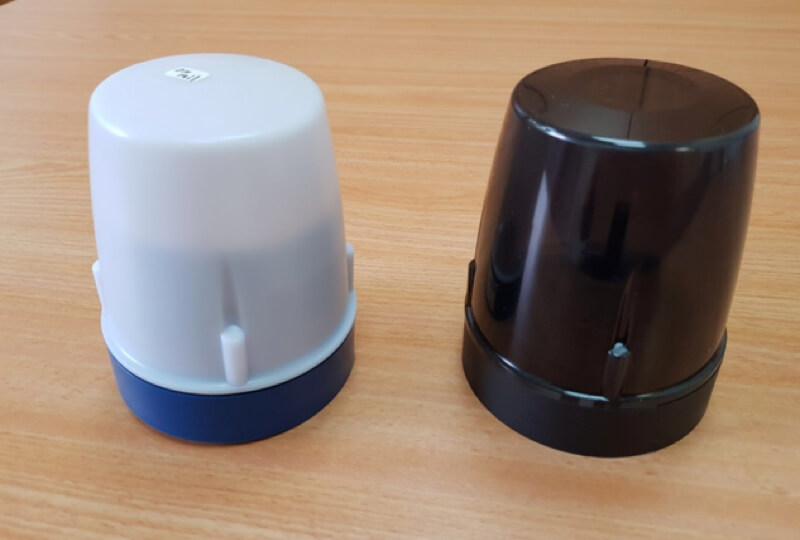T-Light Galaxy Lighting Control Units (LCUs / Nodes)Controls

General
The Galaxy LCU (Light Control Unit) is installed on top of the luminaire and utilizes a photocell-like receptacle for monitoring and control functions of the streetlight fixture, including dimming. Each LCU can be converted into the repeater, combining LCU and repeater functionality. Repeaters enable the extension of the base station’s communication range and coverage to dead zones of LCUs that are unable to communicate with the base station directly. Every LCU can be converted into a repeater via firmware download from the CMS.
The T-Light Galaxy offers two distinct LCU’s for controlling street lights. For standard Cobra heads, the LCU NEMA meets the ANSI C136.41 7-pin “twist lock” standard and may be easily installed on any luminaire which has a matching socket. Additionally, the LCU Internal is designed to fit streetlights which do not have the standard C136.41 7-pin socket. These may include decorative post top fixtures and others.
Features
- DALI and/or 0-10V control interfaces.
- The LCU installation process provides the installer with instant on the spot feedback that the control point was installed correctly by running through a sequence of flashing and dimming of the light fixture.
- Revenue grade on-board energy metering configurable up to 1% accuracy. Revenue grading will require specific utility approval as may be requested.
- On-Board GPS (Optional) or NFC for easy and accurate self-commissioning and locating (LCU NEMA only).
- Built-in photocell. In case of network failure, the control may default to photocell. (LCU NEMA only)
- Astro-clock functionality.
- Repeater – each LCU control point may be turned into a repeater to host hundreds of surrounding control points or other wireless sensors. Turning a control point into a repeater is a software command which may be issued remotely after the system has been deployed.
- Communication using Internet Protocol version 4 or 6 (IPv4/IPv6).
- Over the air firmware upgrades for nodes and connected devices.
- Programmable Schedule – minimum of 1 week schedule stored in node.
- AES256 encryption.
- Occupancy sensors can be connected to a NEMA or Internal node, configured to detect pedestrians or vehicles. An activation command can trigger the lighting of a block of lights.

